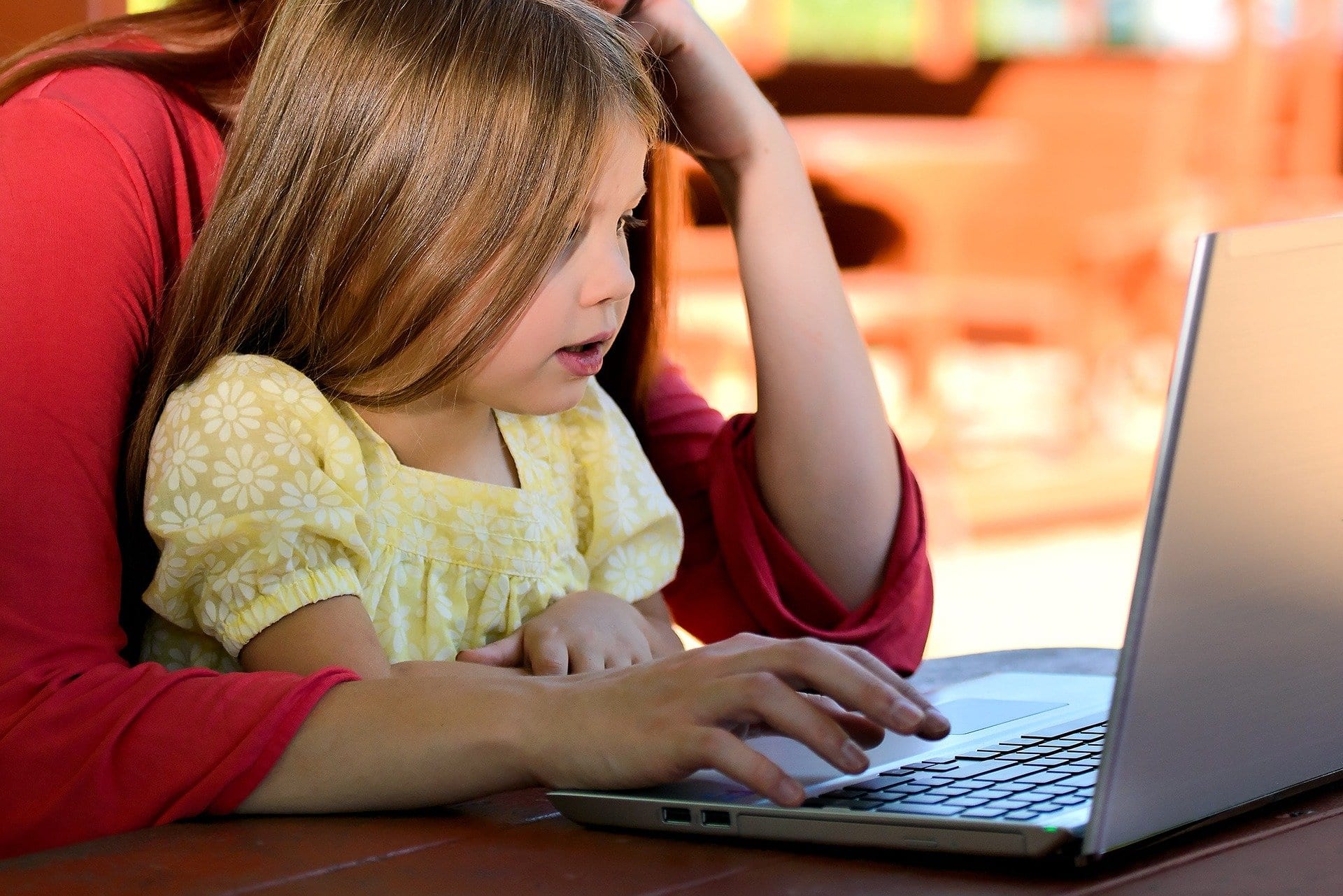 When Governor Edwards announced the closure of all K-12 schools for a solid month to prevent the spread of the Coronavirus, I wasn’t surprised. I had seen the local universities switch to online classes; I had heard of other school districts across the country closing; I knew it was coming. Before the announcement, I had taken time to make sure my pantry was stocked, because when my kids are home, they like to eat – a lot, but otherwise, I hadn’t really made any specific preparations. I am blessed to be able to work part-time from home, so while I might have to shift my work hours around a bit, I did not have to worry about childcare like so many others.
When Governor Edwards announced the closure of all K-12 schools for a solid month to prevent the spread of the Coronavirus, I wasn’t surprised. I had seen the local universities switch to online classes; I had heard of other school districts across the country closing; I knew it was coming. Before the announcement, I had taken time to make sure my pantry was stocked, because when my kids are home, they like to eat – a lot, but otherwise, I hadn’t really made any specific preparations. I am blessed to be able to work part-time from home, so while I might have to shift my work hours around a bit, I did not have to worry about childcare like so many others.
As my oldest hopped into the back of my car on Friday afternoon and yelled “No school for 4 weeks!” though, I suddenly had a flashback to this past summer and how terrible it was. I had tried unsuccessfully all summer to get out of the house and be productive but found myself constantly thwarted by a (then) 2-year old who refused to adopt any kind of regular nap schedule, kid-friendly businesses that didn’t open until 10 am even though my kids were up at 6, and the always oppressive summer heat that made everyone miserable. Most days ended up being spent sitting around the house, eating too much food, watching my kids turn my house upside down, and fighting with my (then) 6-year old who thrives on routine and predictability, which she was not getting. I knew I had to learn from my summer mistakes and quickly develop a plan for the next month.
When we got home, my (now) 7-year-old and I sat down with a snack, a pen, and a piece of paper, and we discussed the rules that would be put in place while school is out. I had a few rules that weren’t up for debate, but I encouraged her input in coming up with others. I did have to direct her selection because I knew that too many rules would be difficult to keep track of and most of the rules she came up with were awfully specific to controlling her sister.
Here are the rules we came up with and how you can make them work for you:
1. Schoolwork must be completed before lunch and before any TV time.
My eldest’s school does plan to provide daily assignments while the school is closed, and I think it’s important to stay on top of them. I also know that if I let her wait until the afternoon to do her schoolwork, it will be a battle to get it done. On Saturday, I set up a designated workspace for her in my home office to help her stay focused when she is working and to make the school time feel as close to normal as possible. As of now, my youngest’s daycare remains open, so I plan to continue sending her to keep her in her routine, but in the event it closes as well, I will give her “assignments” from some preschool workbooks and coloring books while her sister is working.
I will admit I only restricted TV time, not all screen time, for selfish reasons. I’m not really a morning person, and sometimes letting my kids play on their tablets so I can get a bit more shut-eye makes a better day for everyone, and if we’re going to be stuck at home for a month, a little give and take is important.
If your child will have school assignments during this time, I encourage you to work with them to figure out the best time for them to do their schoolwork and to schedule it daily. If you are working from home, it may be easiest to let them play during the day and to help them with their work in the evening. If your teenager likes to sleep in, it may be best to have them set aside a few hours in the afternoon to be productive. If your children’s school is not requiring work to be completed, it’s still great to encourage daily learning-focused activities. There are plenty of online educational resources, and a number of companies are offering free subscriptions right now.
-
Everyone (including Mommy) must read before any TV time.
Reading is really important to me. My youngest would let me read to her all day, and my idea of a great vacation is sitting in a lounge chair on the beach with a good book, but my oldest has to be encouraged to read. Setting a daily reading requirement helps prevent the “summer slide” and reinforces skills she would otherwise be learning at school. Ensuring I hold myself to the same standard, for me, emphasizes the value of reading and gives me a good excuse to sit with a good book and drink a cup of coffee (or wine) when I need a break from the chaos.
I think 20 minutes is a suitable expectation for her age (7); older kids should probably be expected to read for at least 30 minutes. Right now, the libraries and bookstores are still open, so take a quick trip and load up on some good books or arrange a book swap with friends. Also, let your kids read whatever they want. While I’d love to think that all of my students are home reading the classics, any reading is beneficial, and I’d be just as thrilled to find out they spent their break reading Manga, graphic novels, or teen romances, as long as they are reading.
Another great rule to consider during this time is one that establishes a minimum time for outside play. My girls LOVE to play outside, so this was not a rule we needed to establish, but if your kids prefer to hang out inside, making them go outside for 30 minutes to an hour every day is great for their health and less time they are inside destroying your house. Plus, the weather is great right now, and they don’t usually get to enjoy this beautiful spring weather because they’re sitting at desks for eight hours. Make them go outside!
-
No more than 1 movie or 3 TV episodes a day.
Let’s be real here. When we’re all going stir-crazy, screens can be lifesavers. I don’t think screens are evil, and I’ve definitely been guilty of turning on a movie to get some peace and quiet, but I do not want this break to turn in to a 30-day television binge for any of us (myself included). My girls would watch the same movie (Zombies or one of the Descendants movies) on repeat all day if I let them, but aside from the fact that it would drive me crazy and use up all of our data, it’s not good for them to be staring at a screen all day. They need to be using their imaginations and play with the gazillion toys they have in their playroom, but severely limiting their screen time is just creating more stress for me.
A few things to keep in mind: This rule is the rule for the two of them combined, not each child individually, because I know that if I set this limit individually, they would watch each other’s movies and end up with double the screen time. Also, in order to prevent the inevitable arguments over what movie or TV show to watch, if my youngest ends up staying home, I will designate days – my oldest will get to pick on even days and my youngest will get to pick on odd days. One other thing I have decided is that I will not count family viewing time toward their limits. For example, if the whole family is watching The Masked Singer or if we decide to have a movie marathon on a rainy day, that doesn’t tick an hour off of their screen time because it is family time (it’s just in front of a screen).
When it comes to setting your own screen time limits with your family, be realistic. This is going to be rough for everyone, so consider allowing a little more screen time than you might usually, but also emphasize the importance of doing other things by setting specific limits. Do what works best for your family. If you need to work from home without interruption, you may choose to allow more screen time during the day but insist that they be turned off at night. If you know you’ll be more productive working at night, you may insist screens be off during the day and allow for a few hours of screen time after dinner. If you’re worried about keeping track of their screen time, consider making them “check out” the remote, and set a timer for its return.
4. No extra tablet or game time.
This is an extension of the screen time rule and was one of the rules that was not up for debate in my house. My girls each have child-friendly tablets with timers on them and my oldest has a Nintendo Switch with a timer setting. When they run out of time on these devices, they must request additional time from my husband or me, and we have to enter a passcode to give them more time. Usually, my girls don’t use all of their allotted time during the day, but on occasions when the tablet is handy, like when one sister has to come to another sister’s dance practice, the tablets are useful and we will give them more time. As soon as schools closed, I knew I would have to be firm about these time limits. There are simply too many other things my girls can be doing for me to allow them more than their designated time on their tablets.
As with any other screen time, the limits you set should be specific to your family, but they can be set, even on gaming systems like the Xbox. If you don’t know how to set these limits, a quick Google search of parental controls for your device will lead to a number of how-to articles.
-
Toys must stay in the playroom, and the playroom must be cleaned up by dinner.
We are very fortunate to have both a living/dining room and a separate family room in our house, and we have designated the living/dining room as the playroom. Our rule has always been that toys stay in the playroom, but it is a rule that my children must constantly be reminded of and one that I feel is especially important to stress if my kids are going to be home for a month straight. Kids being home all day, every day means more work and more mess everywhere. Every time the kitchen is clean, they will be asking for more food. If they’re not wearing their uniforms every day, they are wearing and dirtying more clothes, which means more laundry. The last thing I need is to be stepping on Barbie shoes or unable to fold the laundry on my couch (never mind actually sit) because it’s been turned into dolly daycare. Keeping toys in the playroom and food and drink in the kitchen helps control the chaos and keeps Mommy and Daddy a little saner.
I added the requirement that the playroom is cleaned up by dinner to keep Mommy and Daddy sane as well. This doesn’t mean they can’t play after dinner, but it does mean that the explosion of toys that will inevitably happen throughout the course of the day must be reigned in by that time. I know from experience that trying to clean up right before bath and bedtime always leads to meltdowns, and if I don’t make them clean up their mess at the end of each day, the chaos gets worse and toys get lost, leading to, you guessed it, more meltdowns.
Whether you are designating space for playing and eating, placing restrictions on spaces to create a separation between workspace and home space, or simply establishing safe zones to limit fights between siblings, setting limits on time and space can go a long way in reducing tension and frustration. Consider everyone’s needs, the things that tend to drive you crazy, and the spaces you have available in your home as you set these restrictions.
-
Only 2 snacks per day – one must be a fruit or vegetable.
Any parent who has spent any school break home with their children knows that they somehow turn into bottomless pits when they aren’t in school, despite the fact that they survive just fine on three meals and two snacks during the school day. My kids ask for snacks constantly, and left to their own devices, their snack selections usually include lots of sugar and lots of junk food. Much of this hunger comes from boredom, not activity, so it is important I place restrictions on what and how much they eat. I don’t mind if they have chips or Oreos in the afternoon, but I still want them to eat the (relatively) balanced meals I prepare for them and not subsisting on prepackaged snacks. When they are in school, I usually spend some time on Sundays washing and bagging fruits and vegetables, like grapes, carrots, and cucumbers, to make packing lunches easier. I plan to continue doing this to make healthy snack options easy and available. I also stocked up on fruit cups, olives, and frozen fruits for smoothies, since all of these last a little longer than fresh produce.
As with all the other rules I have offered, this one should be tailored to your family and what is convenient for them. Let your kids have a hand in selecting the snacks that they want (healthy and not), and remind them that running out to the stores at this time is inconvenient and may become more difficult to do, so too much snacking may result in no available snacks. It’s also a great opportunity for them to practice self-regulation.
Every family needs to set rules and guidelines to survive this time. Get your whole family involved in developing these limits so that everyone feels they had a say. For some families, these may look like hourly, color-coded schedules, and for other families that may mean general rules about snacks and screen time. Remember, your kids are used to structure and predictability at school, so though we may not be able to reproduce that exactly at home, establishing boundaries and expectations can go a long way in managing the needs and emotions of everyone in the household.
And parents, remember, this situation is stressful for everyone. Be understanding when your kids are struggling, be kind to yourself if you’re having a hard time, and remember that boredom is healthy and they’ll be just fine if you don’t entertain them every minute of the day.
About Kelly
 Kelly first moved to New Orleans to attend Tulane University, from which she earned a B.S. in Psychology and English and an M.A. in English. She quickly discovered New Orleans was the place where she had always belonged and her high school sweetheart, Jeff, soon followed her here. They have now been married for 12 year and have two beautiful girls, Emma Jane (7) and Hannah (3). Kelly is a lover of all things nerdy and a proud fangirl. Though she loves to stay busy and involved, she recently left her job as a high school English teacher and sponsor to focus on her family and health. She is now teaching composition part time for a local university, working to revive her love of reading and writing, and focusing on being a more present mom.
Kelly first moved to New Orleans to attend Tulane University, from which she earned a B.S. in Psychology and English and an M.A. in English. She quickly discovered New Orleans was the place where she had always belonged and her high school sweetheart, Jeff, soon followed her here. They have now been married for 12 year and have two beautiful girls, Emma Jane (7) and Hannah (3). Kelly is a lover of all things nerdy and a proud fangirl. Though she loves to stay busy and involved, she recently left her job as a high school English teacher and sponsor to focus on her family and health. She is now teaching composition part time for a local university, working to revive her love of reading and writing, and focusing on being a more present mom.

















What are some of the kid-friendly businesses that don’t open until 10:00? I’m a teacher and I’m single; therefore, I’m interested in learning so I can help school families.
Hi Douglas,
Most kid-friendly businesses don’t open until around 10 a.m. For example, the Zoo, Aquarium, and Insectarium all open at 10 am. Also, most indoor play places have similar hours.